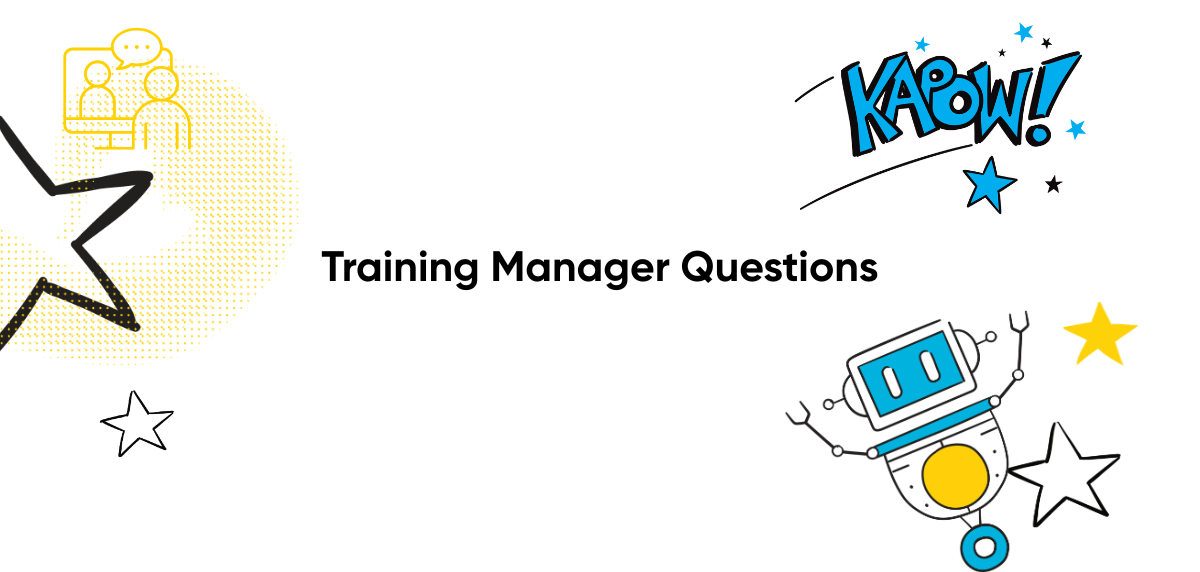At Arlo the majority of our users who use our platform day in and day out are training managers, and training administrators.
When an admin decides to leave their role and the company needs to hire a replacement, its useful to have a set of interview questions ready.
The questions we’ve selected are designed to help asses a candidates experience for the role, but also how well-equipped a candidate is to manage the processes they will be responsible for.
When I speak to our customers about how they use Arlo-and the types of tasks their training managers or admins handle-there are several responsibilities that consistently come up:
- Scheduling training courses (in-person, online and blended courses)
- Handling course registrations, payments and cancellations, and managing other training processes
- Coordinating trainers, venues and resources
- Managing course content and learning materials
- Monitoring attendance and learner progress
- Reporting on training outcomes, such as course attendances, sign-up rates, and ROI
- Ensuring the platform or processes they are using to manage training are configured and optimized to the organizations needs.
With all that in mind, let’s jump into the list 👇
Experience and Background
These questions are designed to gauge a training managers experience, background and suitability for the role.
Question One:
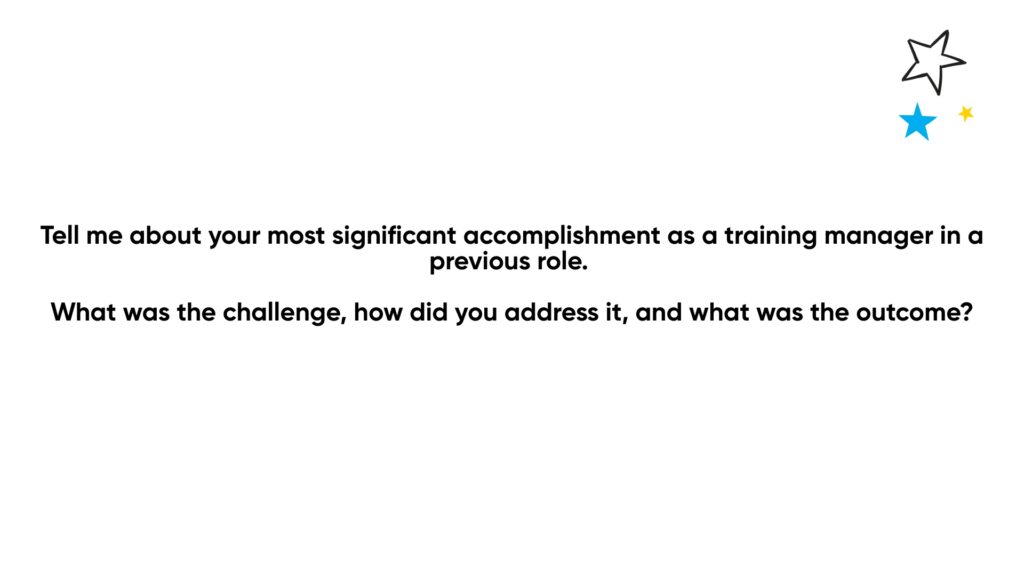
Why This Question is Important:
This question helps get a sense of a candidates problem solving abilities, leadership skills, and practical experience.
For example, you might want to look out for examples where they had to manage issues like low learner engagement during a training program, or how they’ve managed previous training budgets.
If you want to get more specific you can ask them about a challenge which will be one they’ll likely face in the role.
Sample Response:
“One of my biggest accomplishments was leading a company-wide training initiative to implement a new Learning Management System. The challenge was a lack of buy in from staff, as they were used to the old platform we were using.
I conducted several feedback sessions with employees, highlighting the benefits of the new LMS, and provided hands-on training to make the transition smoother.
As a result we achieved a 90% adoption rate within the first two months, and training related support tickets dropped by 40%.”
Key Things to Look Out For:
- Evidence of problem-solving – how they identified and addressed a challenge)
- Clear outcomes and measurable results
- How they demonstrated leadership and the ability to motivate others
- Practical experience implementing a significant project or initiative.
Question Two:
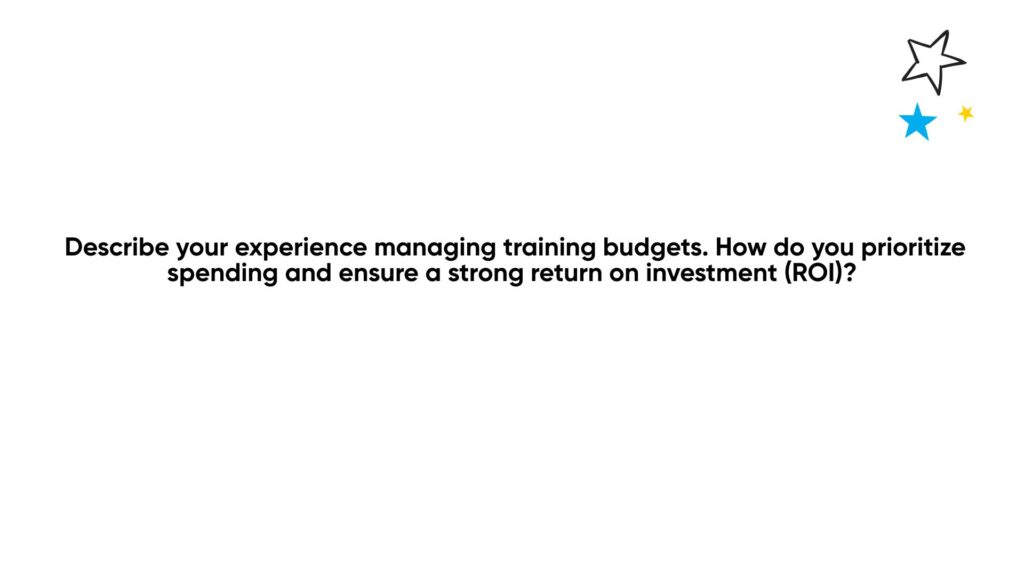
Why This Question is Important:
Budget management often comes up as a core responsibility for most training manager roles. You want to know how well the candidate can balance quality training with budget constraints, ensuring they can make the most out of the resources they’ll have available
Sample Response:
“In my previous role, I managed a $200,000 annual training budget. I prioritized spending by analyzing course demand, enrollments trends, and revenue potential.
High-performing courses received full-funding, while low-enrollment offerings were restructured or consolidated. I measured ROI by tracking registration growth, course completion rates, and attendee feedback.
One program redesign boosted registrations by 25% and reduced delivery costs by shifting to a blended format. “
Key Things to Look Out For:
- Check if the answer displays a data driven and informed process when allocating budget
- A commercial awareness in maximizing course profitability and reach
- A link between course development and business outcomes.
Question Three
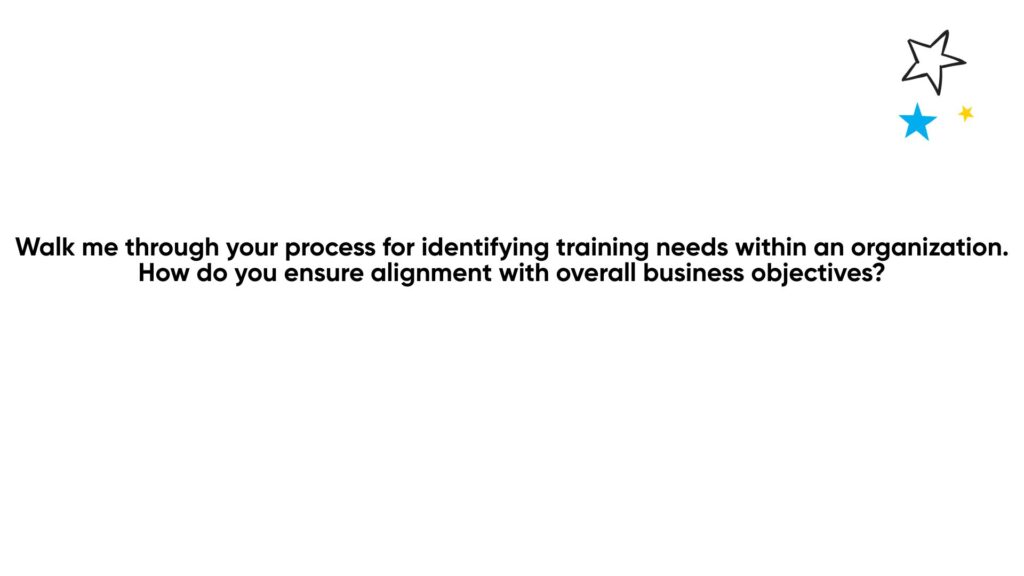
Why This Question is Important:
This question helps assess whether a candidate can identify training needs based on data, customer demand and business goals.
A strong training manager should be able to align course offerings with commercial priorities like revenue growth, compliance requirements, or emerging trends, and demonstrate initiative in adjusting the training portfolio accordingly.
Sample Response:
“I start by reviewing course performance data such as registration trends, learner feedback, and completion rates. I also gather input from customer-facing teams to identify emerging topics or areas of interest.
For example, when we noticed a drop in repeat bookings for a core course, I initiated a review of the content and delivery method. We refreshed the material, added a live Q&A component, and relaunched it with targeted promotion. Within three months, bookings rebounded by 30%.”
Key Things to Look Out For:
- Check to see what the candidates methodology is for identifying what courses to prioritize
- See whether the candidate indicates being driven by factors that directly influence revenue in their decision maling
- Check that the candidate links course design or selection to measure business outcomes or goals.
Question Four
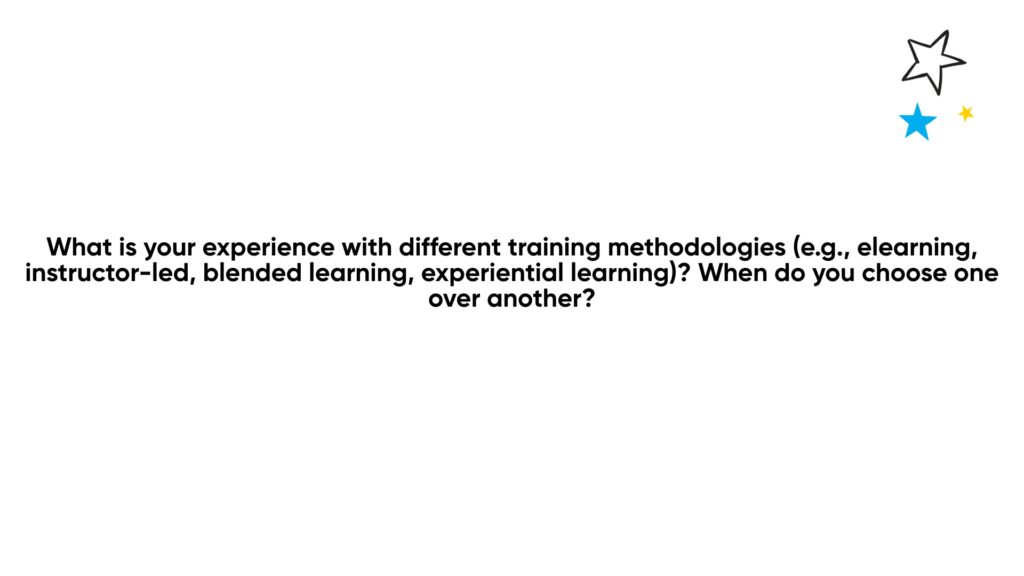
Why This Question is Important:
A good training manager should be versatile and understand when to apply different methodologies based on the learning objectives, audience and resources This question assesses their knowledge of modern training techniques and how adaptable they are.
Sample Response:
“I’ve used a range of delivery methods depending on the course type, audience, and business goals. For compliance or foundational courses, I often choose elearning, its scalable and cost-effective”
“For more complex or hands-on content, instructor-led training works best, especially when learners benefit from live interaction or guided practice
Key Things to Look Out For:
Question Five
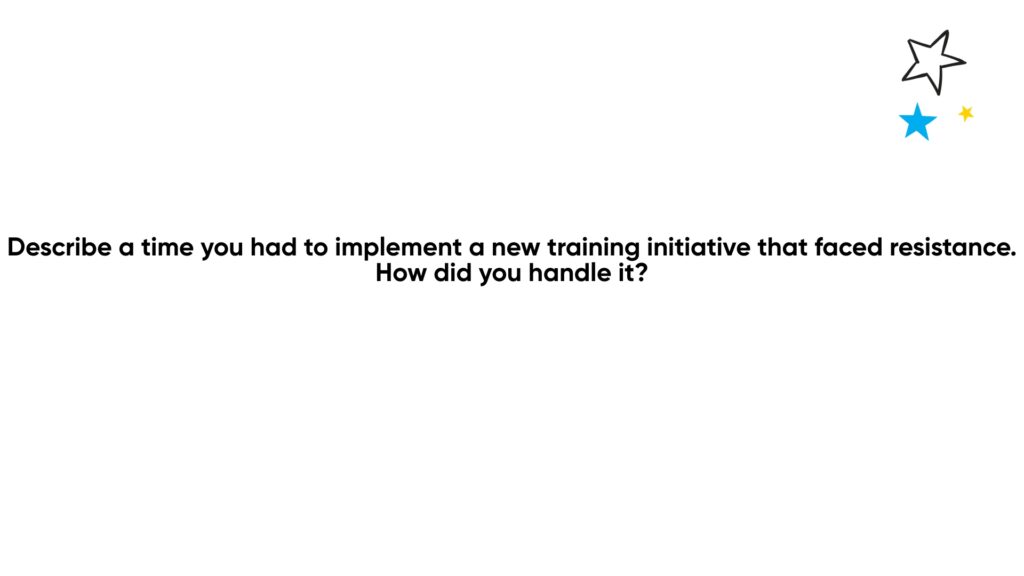
Why This Question is Important:
Training managers often need to introduce new course formats, platforms or pricing models as business priorities shift.
The question can help you get a sense how the candidate navigates and manages stakeholder or customer pushback, adapts, plans and ensures a successful rollout of any new key training initiative.
Sample Response:
“When we decided to shift our most popular in-person course to a blended format, we faced pushback from long-time trainers who were hesitant to adopt online delivery tools. To ease their concerns, I set up one-on-one sessions with trainers to walk them through the new format, and demonstrate how the switch could benefit the learning experience“
Key Things to Look Out For:
- A proactive, communicative approach to building buy-in or addressing concerns
- Adaptability in delivery or messaging, with measurable outcomes from the initiative.
Strategic Thinking Questions
These questions are aimed at gauging a training managers ability to manage day to day operations, but also how they can contribute strategically to the overall business.
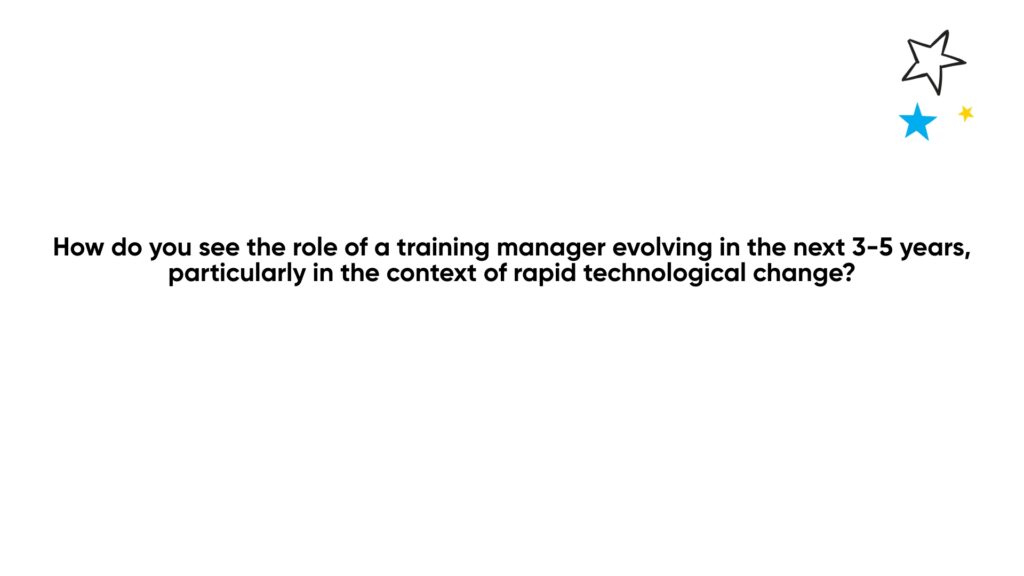
Question Six
This question is of course a little bit prediction based. but its a useful gauge of a candidates ability to think strategically and anticipate shifts.
The latest data available, while not strictly about training managers but learning and development professionals more generally, shows trends that are worth noting.
According to the L&D 2025 Global Sentiment Survey that surveys over 3,000 L&D professionals annually , AI was ranked the top priority across every major L&D workspace — with interest hitting a record high of 22.6%. There’s also a growing emphasis on showing value, consulting more deeply with the business, and leveraging data for personalization.
For training managers, this means a shift away from manual coordination and toward using platforms like Arlo to automate workflows, deliver more personalized learning experiences, and prove impact through analytics.
Sample Response:
“In the next few years, I see training managers taking on a more strategic role. Rather than focusing solely on admin, they’ll use more technology to automate operations, and use data to see what courses are performing and the ones that aren’t. Technologically will also allow us to offer much more personalized learning to delegates”.
Key Things to Look Out For:
- An understanding of the latest trends in training
- A customer-centric mindset around training delivery and engagement
- An ability and openness to considering and adopting new technologies.
Question Seven
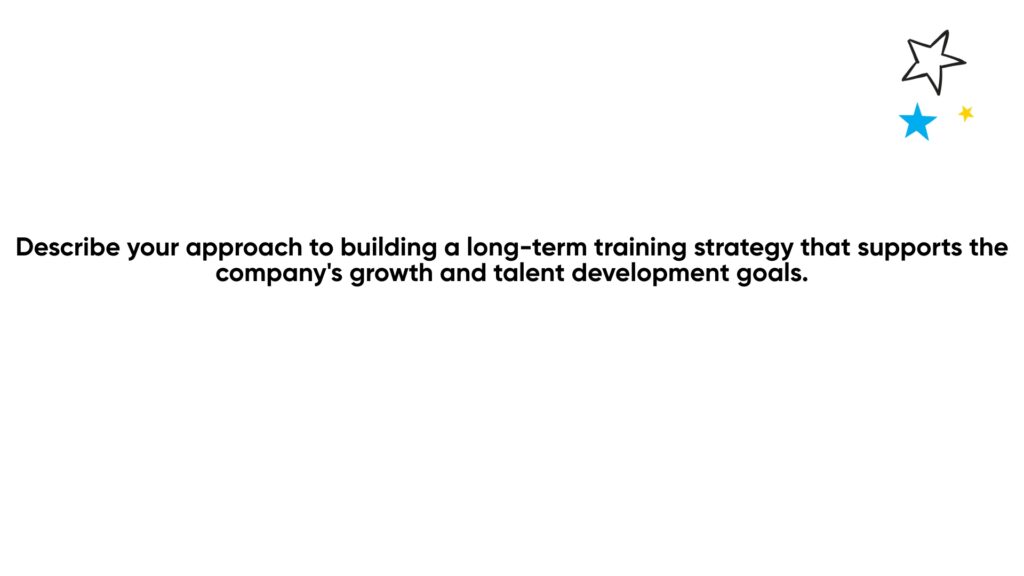
Why This Question is Important:
This question uncovers whether the candidate can align training initiatives with wider business, and talent goals. It tests their ability to think strategically, spot capability gaps, and create scalable, future-proof training plans.
For training businesses, the question also reflects how well the manager can support a training client over time, to establish strong customer relationships and repeat business.
Sample Response:
“My first step is to understand the company’s strategic direction, whether that’s expansion into new markets, digital transformation, or a shift in service offerings. I then map out the skills needed to support the goals, identify current gaps, and prioritize them based on business impact”
Key Things to Look Out For:
- Evidence of aligning training initiatives with business priorities, and growth plans.
- A structured, phased approach that covers immediate needs and long-term goals
- Clear thinking around measuring impact and adapting the strategy over time.
Question Eight
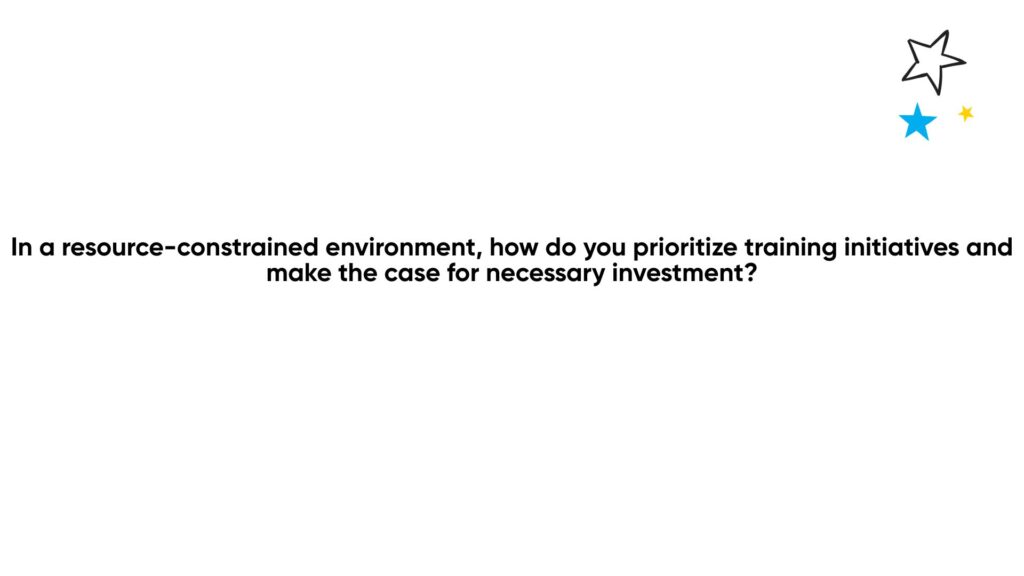
Why This Question is Important:
Training providers can sometimes face limited resources, and need to make sure they are putting their most focus into the most important areas.
The question helps determine how candidates prioritize the most impactful training programs when there isn’t enough to go around. It also helps show they justify the need for investment to decision makers.
Sample Response:
“In a resource-constrained environment, I prioritize courses or initiatives that are most aligned with market demand and revenue potential. I regularly analyze course performance, enrolment trends, client feedback, and profit margins, to identify which offerings are delivering the most value. If budget is tight, we might delay low-demand or low margin courses, and reinvest in optimizing high-performing ones, such as updating content or improving delivery formats”.
Key Things to Look Out For:
- Strong sense of commercial awareness e.g. market demand, margins, and client needs.
- Strategic use of data to guide prioritization decisions
- Ability to build a compelling, evidence-based case for investment in a resource-limited setting.
Question Nine

Why This Question is Important:
Similar to the question around how the position of a training manager may change over time, it’s important for a candidate to stay proactive on industry trends, and how the industry may be changing.
Sample Response:
“I stay current through a mix of channels. I subscribe to newsletters like Training Industry and Learning Technologies, and follow thought leaders. If there are any noteworthy trends that require change then I act upon them. For example, I recently noticed a desire for more flexible, modular content formats. In response, I led a revamp of our course delivery options, offering both microlearning and blended formats.”
Training Management Software (Arlo or Similar)
This question assesses a candidates familiarity platforms for managing training which are primarily known as training management software or systems. It’s not essential that a candidate has used one before, as training can always be provided – but its a useful gauge nonetheless.
Question Ten
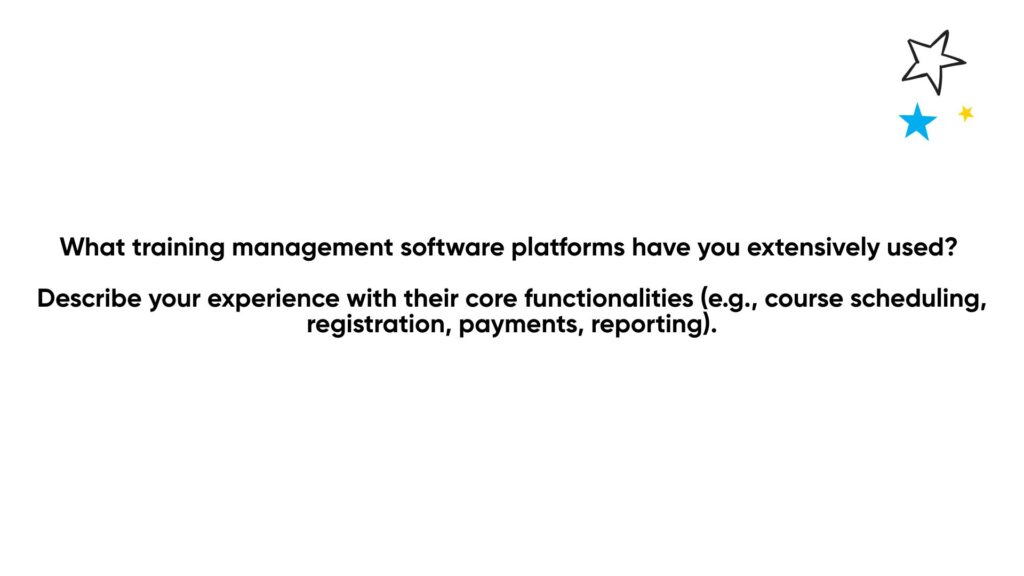
Why This Question is Important:
This question helps gauge whether the candidate understands how to use a platform that if implemented and used is the operational backbone of a training business.
Familiarity with training management systems is needed if a candidate is going to be working for a training business that’s efficiently running multiple courses, and scaling their operations.
Sample Response:
“I’ve used several training management systems, including Arlo in a previous role. With Arlo, I managed end-to-end training operations, from creating elearning courses, scheduling public and private courses to handling automated registration invoicing, and payment processing. I also used the platform’s reporting tools to track attendance, revenue per course, and overall training ROI.“
Key Things to Look For
- Familiarity with platforms widely used by training providers
- Experience with automation of core training processes such as course scheduling, taking and processing course bookings and more.
- Using data and reporting features to inform business decisions.
Program Design and Delivery
Question Eleven
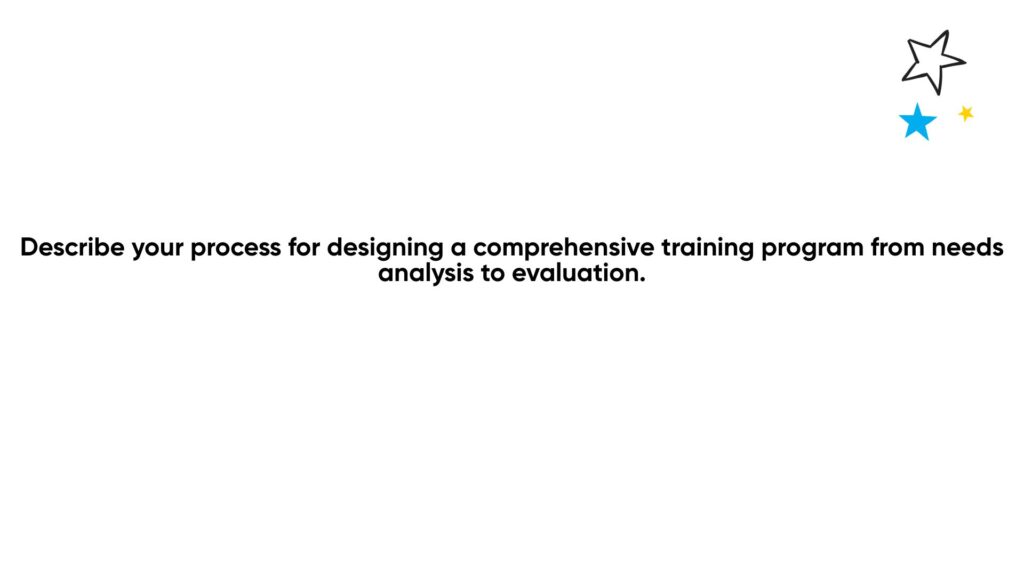
Why This Question is Important:
Training providers need to build programs that are commercially viable and outcomes-driven. This question helps reveal whether the candidate can identify demand, create content that meets market needs, and evaluate success effectively, all while managing resources and timelines.
Sample Response:
“My process starts with a commercial needs analysis. I review customer feedback, market gaps, and competitor offerings. Once I identify demand, I work with SMEs to define learning outcomes, and structure the course. I choose a delivery format based on what’s most effective for the topic and audience.
After building the content, I run a pilot session, gather learner feedback, and make improvements before a full launch. Post-launch, I track enrolments, learner outcomes, and client feedback to evaluate success and make data-informed updates.”
Key Things to Look Out For:
- A structured, end-to-end approach to research and evaluation
- Commercial awareness to identify market demand and gaps
- A process for iterative improvement based on feedback and data.
Program Design and Delivery
Understanding a training managers approach to designing and delivering training programs is important. This may be something handled by a learning or instructional designer.
But if a training manager will be responsible, then its important to assess their ability to create training materials, tailor programs to learning styles, and how they ensure any training programs they create align with wider business objectives.
Question Twelve
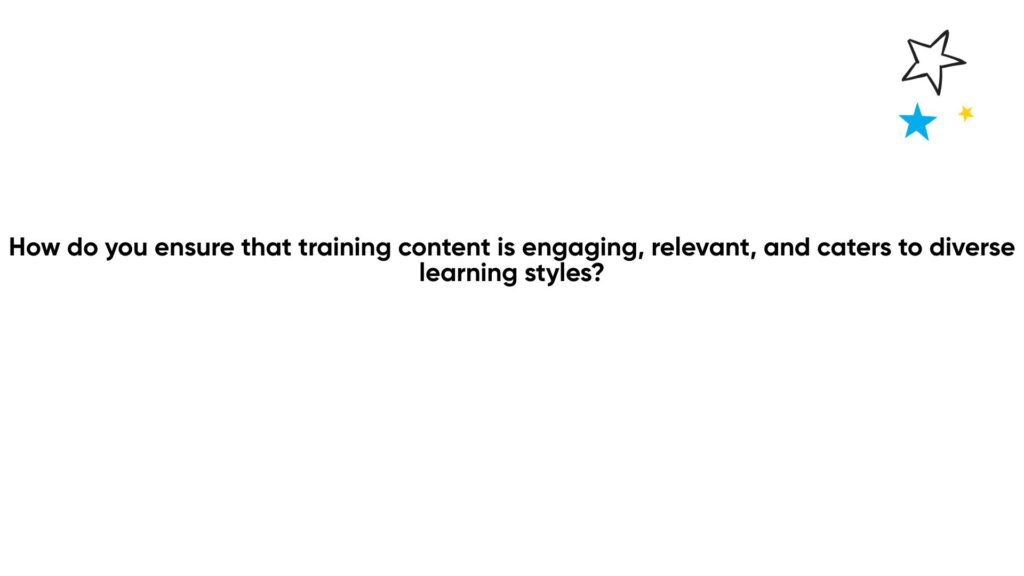
Why This Question is Important:
Training providers need to make sure every course they run effectively meets different learning styles. This question assesses whether a candidate has a thoughtful, inclusive approach to content design, one that drives learner engagement, and supports business outcomes.
Sample Response:
“I use a blended approach to content design to address different learning styles. For each course, I include video content, downloadable resources, interactive quizzes and real-world case studies. I use a checklist where I match the different elements I’ll include in a course to the appropriate learning style. If I can, I test content with a small group of learners and gather feedback to make adjustments, before finalizing a program”.
Key Things to Look Out For:
- Use of varied training formats, and different methods to support multiple learning styles
- Evidence of testing and iterating on learner feedback or analytics
- Focus on relevance and clarity in content delivery.
Question Thirteen
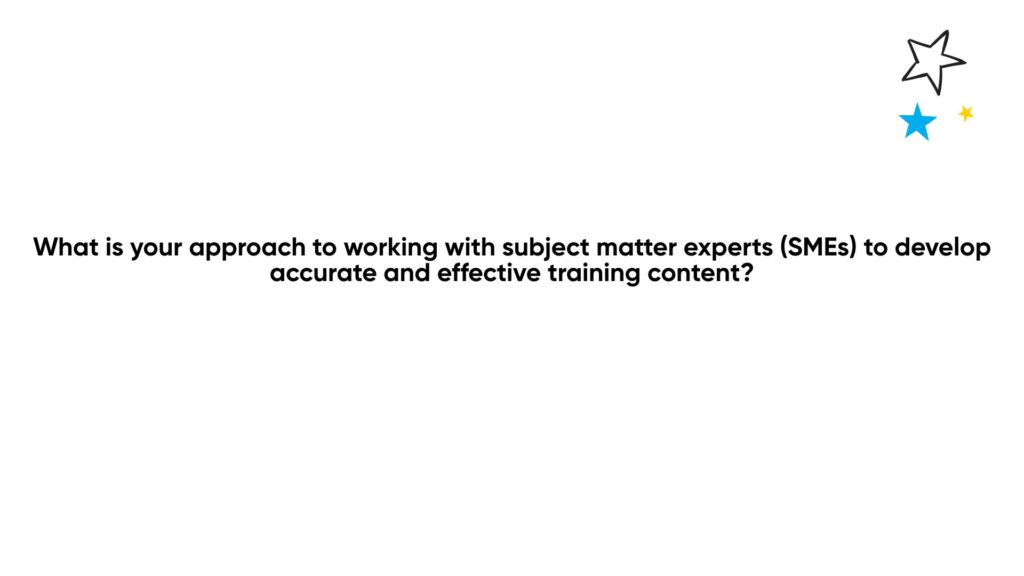
Why This Question is Important:
Training providers often rely on working with external SMEs to develop specialized content. This question is about revealing how well the candidate collaborates, translates technical knowledge into teachable material, and manages timelines and expectations.
Sample Response:
“I start by aligning with the SME on clear learning outcomes and outlining the structure of the course. I prepare interview questions or workshop agendas to extract key insights efficiently. I then translate their input into digestible modules, ensuring accuracy while simplifying complex information. I maintain regular check-ins to review drafts and keep projects on schedule. I also involve the SME in final QA to ensure the content is accurate”.
Key Things to Look Out For:
- Ability to bridge expertise and instructional design
- Good project management skills, and a clear communication and collaboration process
- Respect for SME time and project timelines
Stakeholder Engagement and Collaboration
Questions to do with stakeholder management and collaboration help you understand how a candidate will work with other teams, clients and stakeholders. Its also an opportunity to gauge any soft skills, such as communication skills which are vital for success in a collaborative role.
Question Fourteen
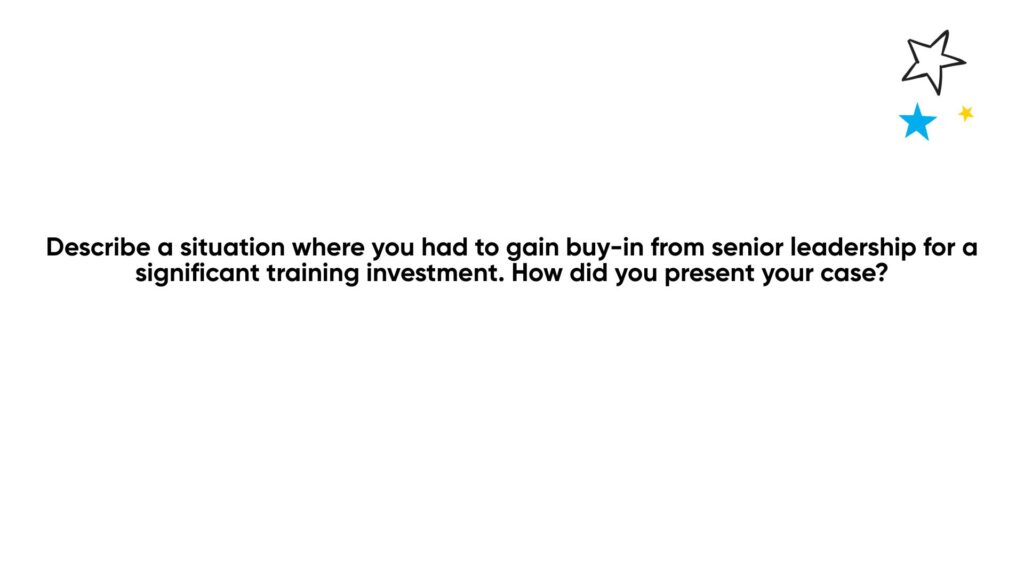
Why This Question is Important:
Getting buy-in from senior leadership is a critical part of launching high-impact training initiatives, especially when budget is involved. This question helps assess how well a candidate can build a strong case, communicate value clearly, and link training outcomes to the organization’s strategic goals.
Sample Response:
“I proposed investing in new course creation tools to improve content quality and speed. Our outdated setup was affecting client satisfaction and slowing delivery. I presented data based on production delays, learner feedback, and retention rates, along with a clear ROI forecast.
By framing the project as essential to growth and client retention, and suggesting a phased rollout, the leadership team approved it.”
Key Things to Look Out For:
- A logical, evidence blacked argument to align business growth and client outcomes
- Clear understanding of client experience and operational bottlenecks
- Ability to anticipate concerns and present a phased, low-risk proposal.
Question Fifteen
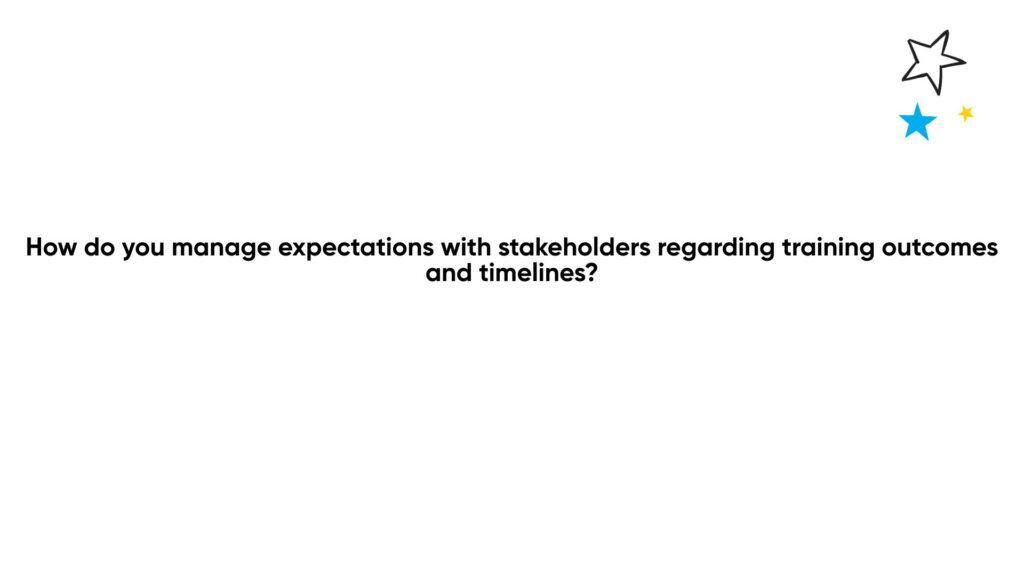
Why This Question is Important:
Training providers often work under fixed delivery schedules and client led objectives. This question helps understand whether a candidate will be able to manage those relationships effectively, setting realistic goals, navigating competing demand, and keeping clients informed when plans need to shift.
Sample Response:
“When onboarding a client, I clearly outline deliverables, timelines, and success measures. I identify any dependencies upfront and break projects into phases if needed. I provide regular progress updates and flag issues early, always offering solutions. This keeps the client informed and builds trust“.
Key Things to Look Out For:
- Addresses common project risks and addresses them early
- Uses structured communication to keep stakeholders aligned
- Provides practical solutions when timelines or scope shift.
Success Measurement and Evaluation
Finally, questions around the effectiveness of training programs should be an opportunity to see how a candidate has measures training success in a prior role.
You may have your own metrics you’ll want them to use, but asking these kind of questions can reveal their understanding on assessing training link programs to business objectives, and measure ROI.
Question Sixteen

Why This Question is Important:
Demonstrating clear, measurable value is the key to the success of any training business. Using questions which ask the candidate to identify and use specific metrics that highlight the effectiveness of the programs they’ve created or managed.
These metrics can include key measurables such as registration rates, completion rates, and more qualitative measures such as were learning outcomes achieved.
Sample Response:
“I use both quantitative and qualitative metrics to evaluate training effectiveness. Quantitative metrics include course completion rates, learner satisfaction scores, and post-training performance improvements, like a 15% reduction in workplace incidents after a compliance course.”
“Qualitative metrics come from feedback surveys, and follow-up interviews, where I gather insights on how learners apply the training in real-world situations. Combining these metrics helps me demonstrate the impact and ROI of training.”
Key Things to Look Out For:
- Ensure the candidate understands both quantitative and qualitative metrics, the importance of both, and can effectively apply them to assess training outcomes.
- Look for examples where the metrics a candidate measured directly connected to business outcomes, such as being able to demonstrate ROI through revenue growth, cost savings, improved efficiency, or client satisfaction.
Final Thoughts and Takeaways
There you have it, sixteen sample questions you can use to assess a candidates during a training manager interview.
Each one is geared towards understanding how well a candidate understands the responsibilities of the role, from developing and delivering effective training programs to aligning learning strategies with business goals.
From our experience at Arlo, strong training managers have a few common traits to keep an eye out for:
- Proven experience developing and delivering training programs
- Understanding of different learning styles and trainign delievry methods
- Comfort using training management systems and elearning platforms
- A track record of aligning training programs with business objectives
- Ability to measure success using relevant performance metrics.
Choosing the right training manager can have a long-term impact on your customer satisfaction, team performance and business growth, and hopefully these questions will help you make the right choice!
